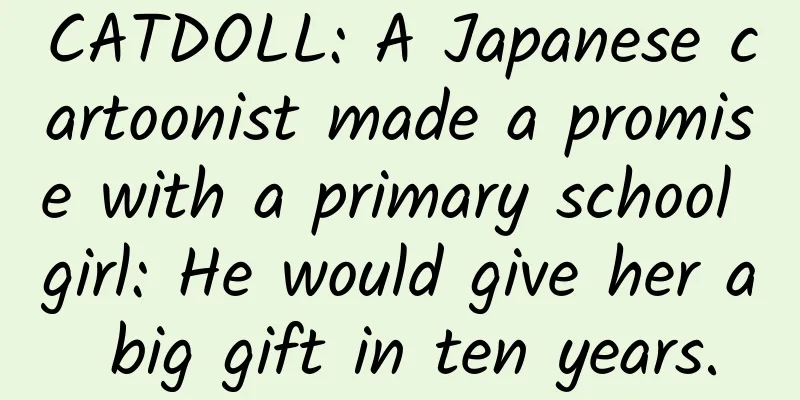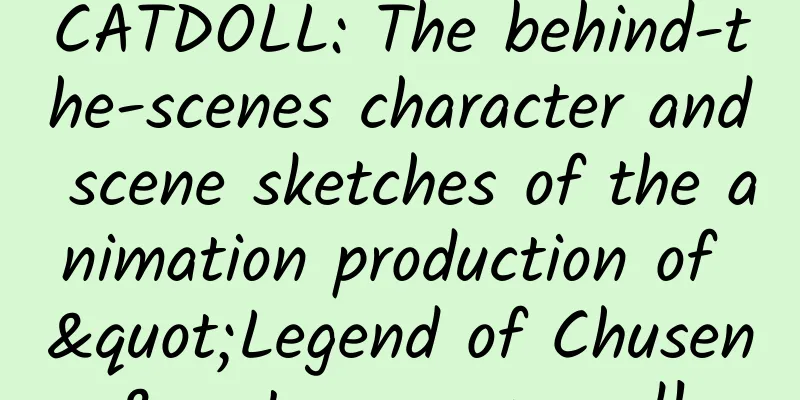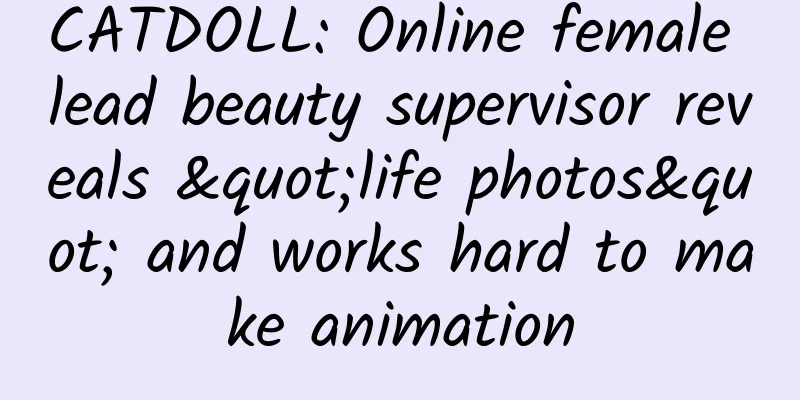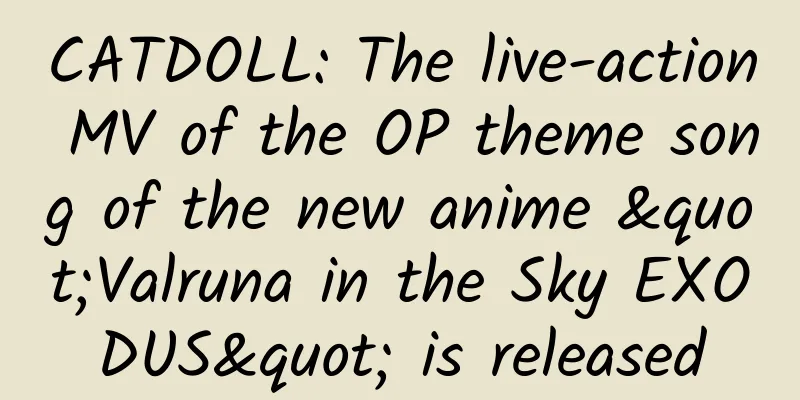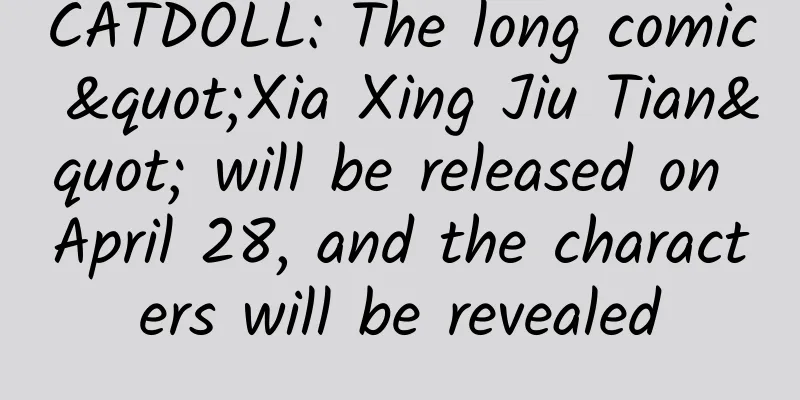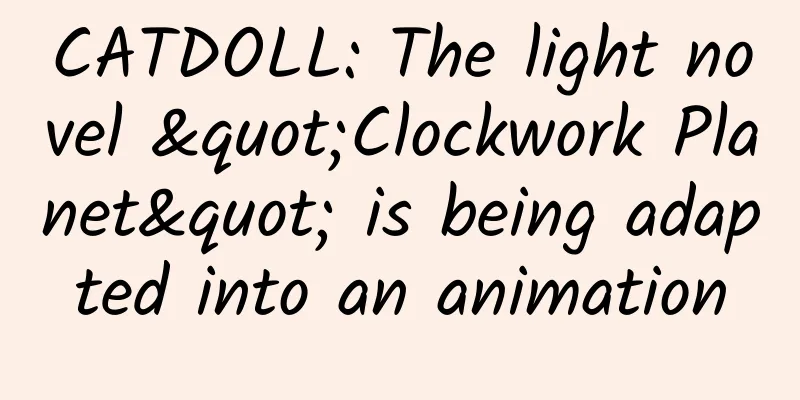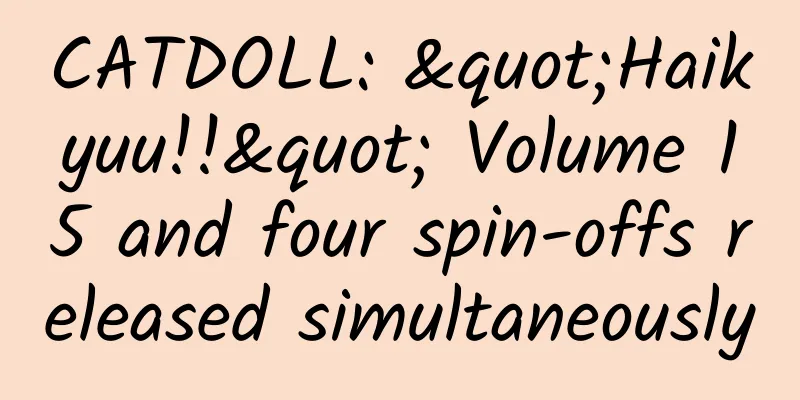CATDOLL: The sound director of the Naruto the Movie: The Last reveals the inside story of the movie's production

|
With more than 20 years of experience in the voice acting industry, Ebina Kyonori (now more often known as Ebina Yasunori) is the sound director of animation works such as "Naruto Series", "A Certain Magical Index Series", "Minamikazu Seishunori Series", etc. Since he published "Four Dubbing Knowledge You Dare Not Ask" last year, he has recently published a new column on Twitter, just in time for the sensational release of the theatrical version "Naruto: The Final Ninja Movie" directed by Kobayashi Tsuneo! Below is a description of the sound director in the first person: For those who haven't watched "Naruto: The Final Ninja Movie", there may be content that you don't want to be spoiled by, so please pay attention before reading on. For those who have already watched the movie, when you finally know how a certain scene in the play was produced, you may want to go to the cinema to watch it again!
Earlier this year, I got my first top secret First, let's go back to the time of "Naruto the Movie: Road to Ninja" (ROAD to NINJA), which was in the summer of 2012. Because it has been a long time since then, my memory may be a little fuzzy, so please forgive me if I get the time wrong. After completing "Road to Ninja", I had this conversation with the producer... (2012) Me: "What's the next story?" Producer: "It won't be released next year." Me: "What!?" The following year, in 2013, I had a conversation with him at the Naruto TV animation event... In 2014, a new movie will be released in the winter. This is the only information I know in the whole of 2013. Unexpectedly, after the New Year's Day, there was a new movement in our "sound production group": "Naruto", which has been serialized for 15 years, will end in November, and the subsequent story will be revealed in the movie. Although at that moment, I first learned the specific release date of the movie (Note 5), but the most shocking thing to me was the fact that "NARUTO will end". This information was classified as "top secret", and only a few people had the authority to know it for the time being; of course, all the voice actors didn't know about this at all... Because the movie version itself still had no information at this time, so I continued to be busy with the TV animation version. Stick to the collaboration between Junko Takeuchi and Nana Mizuki The preparations for the production of this film started in April this year. Since it is scheduled to be released in December, I already have some preliminary ideas, including planning the completion date of the sound system, booking a place suitable for dubbing (post-production dubbing) of big screen works, contacting a suitable dubbing studio, etc. After all, the people involved in the sound engineering have other projects besides "Naruto", so I have to confirm the NG dates with them one by one. After the staff's schedules were properly adjusted, I finally had the feeling of "Ah~ I really have to start~". Although I haven't received the script myself, I heard that the company (the sound production company) has received a script that is still in the early stages, mainly describing the story of Naruto and Hinata. In other words, Junko Takeuchi and Nana Mizuki must voice together (Note 8). In view of this, we must absolutely ensure that the two of them can perform together! Unfortunately, both of them are big stars with full schedules, and there are very few dates that can be matched together. As a result, they were booked for a few days in October in mid-April. We arranged about 4 days in advance, and then we started to confirm the schedules of other voice actors. Finally, we selected two days that would be the best for everyone to do the dubbing, and most of the voice actors participated in the recording on those two days. As for whether there was already a voice actor candidate for the new character Toneri in this film? I didn't know at the time. A first draft of a script with super exciting content I remember that it was in June when I actually got the script. I still remember my first thought after reading the script: "‼︎‼︎‼︎‼︎っっっ", because there were so many things that surprised me! In June, the original manga of "Naruto" was still being serialized in "Weekly Shonen Jump" and there was no word of "ending". But the script of this film not only wrote about what happened to so-and-so later, and how someone and someone happily got together, but also their children appeared. "If I accidentally lose the script, I will definitely be hunted down by the boss..." Whenever I carry it with me to work, I will feel so nervous. At this stage, the script of the theater version is not the final version. The content of the story may be modified at any time, and in fact, it has been revised. Even so, I still need a script so that we can quickly determine the general direction of the music style - after all, the length of the theater version is more than 90 minutes, and it is not an easy task to think about the overall arrangement of the music. Therefore, I must get the script early, so that I can think about the performance and composition of the music in my spare time. In order to do my homework smoothly, I must grasp the outline of the plot early, and I also need time to understand the progress of the story. During this period, I learned that the composer of "Naruto" Koji Takanashi won the "JASRAC International Award" for the second consecutive year. At the celebration party, although I chatted with him, we did not talk about the topic of theatrical music at all. At most, I just suggested that he might try to use the electric organ to compose music next time. The three main principles of the film's style In July, I finally met with Director Kobayashi Tsuneo for the first time, and it was also the first time in my career that I worked with him. Director Kobayashi gave me three musical guidelines: the theme of this time is a love story, I hope to produce a gorgeous and climax-filled music, and it is okay to use old music from the TV animation. From then on, I officially started to edit the music list: since the enemy of this film is the moon people (preliminary concept), I decided to lay out the style of a supernatural movie. Then there is the dreamy love and bitter love between Uzumaki Naruto and Hyuga Hinata, the battle scene between the Earth Army and the Space Army (preliminary concept), and the Japanese rock music that is indispensable to "Naruto". I considered all of these one by one. After many discussions with Director Kobayashi, I finally got him to agree with my musical theme. So, I started to note the timing and length of the music in the script. At this point, the script for the movie was still not finalized, so I just wrote down the parts that would not matter if the plot was changed. At this time, although it was announced that Fukuyama Jun would play the role of Toneri, the sound production had already made a proper schedule, so Fukuyama Jun's name might have been on the list earlier. This is because Director Kobayashi not only checked all the voice actors who had performed in the "Naruto" animation series, but he also required that "Toneri" must be played by voice actors other than these people. Regarding the theme of the film's music, my own idea was "I don't want Naruto and Hinata's theme to take up too much of the theme." I wanted to avoid having a relaxing love song, and instead try to think about how to use the right melody to express the young and uneasy feeling of the two people's first love. As for the melodious music that accompanies the happy ending, I actually didn't have any idea at this time, and I only thought of using delicate piano music to embellish it. Voice actor dubbing test & music test In late July, the production committee invited Shueisha, the animation company "ぴえろ", the sound staff and the leading voice actors to hold a commemorative dinner to celebrate the 600th episode of the TV animation. It was at this occasion that Shueisha officially announced on stage that "NARUTO's original work will soon be completed", and everyone present showed expressions of disbelief and shock. I remember that it was in August. Junko Takeuchi, Jun Fukuyama, and Director Kobayashi gathered in the recording room to do the initial dialogue test. I forgot whether Nana Mizuki came with us. It was really a pity. The purpose of this test recording was not only to shape the new character "Toneri" with voice, but also to grasp the direction of the acting of "adult version of Uzumaki Naruto". I remember that Naruto's acting didn't seem to rely on lowering his voice to show his mature side, but instead used a steady tone and intonation to make him sound more like an adult. We only took a few takes to complete the character, which took about 30 minutes. Starting from August, the storyboards for the theatrical version were gradually completed page by page. For me, I wrote down all these ideas on the storyboard, such as which music to use in which scene, and from when to when. However, a movie cannot be made with just the storyboard. If it is found that the length exceeds the preset length during the storyboard stage, some cuts will be cut. These cuts are called "short cuts" and will never see the light of day again... In any case, as a sound supervisor, in this case, about 40% of the music planning progress has been completed. From then on, I started a period of looking at the storyboard while thinking about the music in my mind. In September, I finally discussed the details of the composition with Koji Takanari for the first time. Anyway, I met with him first and talked about the music needed for the film and the style of music I wanted. I mainly provided him with some information that could inspire the composition, including the music theme mentioned above, how big and wide the melody should be, etc. Based on the current plot, what style of music would you like to use? I would communicate with Director Kobayashi repeatedly about these issues. Even Director Kobayashi had his own ideas, for example: this scene must be quiet, so I don’t want any music to appear; a certain character will have a mood change later, so I hope the music will stop here. I would sort out a comprehensive music plan according to his needs. At this time, Takanashi Koji had not started composing yet, but had entered a state of meditation and brainstorming before composing. Since the video had not yet been produced, no matter how long the music would be, or how exciting the music would be, it was still uncertain. It could only be considered as preparatory work before composing. Brands and uses of two types of microphones In October, we finally started recording the dubbing. For this theatrical version, we first notified the voice actors with less roles to do the dubbing before inviting the main voice actors to come. In other words, I did not record them in the order of the dubbing script. Please look at the photo below. The microphones in the recording studio are set up like this. At the back of the room, do you see a tall microphone that is not facing anyone at all? That microphone is called an "off mic" (オフマイク), and it is mainly used to collect echoes in the room. There are several places in this film where echoes are used. Can you guess which places they are?
If you look closely, this off mic looks like this. You can see that it is at a very high height, not facing the person, but facing the wall. We can use it to express the sound coming from behind the door, or mix the echo of the space into the main channel to produce different effects. It can be said to have many uses. I'd like to add that the microphone used to record the voice actors' voiceovers is the well-known German brand "Neumann U87Ai", which is the same model as the microphone we used to record the TV animation version; as for the off mic, it is the domestic brand "SANKEN". I basically don't have any special requirements for microphones. If I have to say, it's better to choose a microphone that can effectively reduce the noise on the scene rather than a microphone that matches the movie tone and can capture all the sounds beautifully. If the latter is available, it doesn't matter which brand it is. In October 2014, the dubbing was officially started. We spent two days to complete the main dubbing work. Here is the complete schedule: On the first day, there were only voice actors available to attend on that day. The next day, there were only voice actors available to attend on this day. Just like this, when the last minute of recording was finished, there were only a few voice actors left on the scene. Then, we specially selected another day to record for the voice actors who were not available on both days, and also invited 4 special guests to make guest appearances. We invited "スキマスイッチ" who sang the theme song, but the role of the voice was not decided in advance. So, I decided on the role to be voiced on the spot based on the amount of lines and the difficulty of pronunciation of the lines with the "voice performance" (アフレコ performance) and the infinite switch duo. Then on another day, we recorded the "crowd voice" (ガヤ収錄); the entire recording project was completed. Next, it's the furious Dubbing Shura field... Not yet, not yet, I'm temporarily going through a period of no progress. The reason is that the current theater version data (フィルム) is only temporary. Even if I start working now, once the updated version of the archive data is sent, I still have to start from the beginning. Therefore, the most I can do now is to concentrate on filtering out the noise of the voice actor's lines. Music repertoire requirement list, music composition table Since I already had preliminary images and sound data, I discussed the composition with Koji Takanashi for the second time. Even though it was just a temporary file, after all, with the actual images, my ideas gradually became more concrete. For example, even if there is a scene that needs music, if it is less than 20 seconds long in the image, then don't use music at all! Or: From the storyboard, it seems that different styles of music should be arranged to show the changes in the mood of the characters before and after; but after watching the video, I found that the scene was not that important... and so on. Usually, I didn't notice some details in the storyboard until I saw the video in motion. This is how I discussed the final music composition of the whole film with the composer. When we attend a film score discussion, in addition to making a list of music tracks, we also prepare a music composition table. The music composition table helps me project the ideas in my mind into black and white, and it is very easy for others to see at a glance. Is this song for the enemy or the partner? Is it an exciting style or a leisurely style? Is it a large-scale song that requires the use of an orchestra? ... and so on. It will be clearly recorded on the composition table. If I have the opportunity, I will find a time to show you. NARUTO Main Theme Reborn from the Ashes Before the music discussion meeting, I had a big question in my mind. That is: As the final chapter of Uzumaki Naruto's growth adventure, how should I give back to the fans who have supported and loved him for 15 years? Moreover, I also hope to express my deepest gratitude to Mr. Kishimoto in the music. Unfortunately, I still can't find a good way to realize my wish... After I watched the video file, my sluggish thoughts were suddenly stimulated by a new current - that is, when the opening animation of "THE LAST -NARUTO THE MOVIE-" was shown on the big screen, the passionate theme song! From the screen, we watched Uzumaki Naruto grow from a boy, a young man, and a middle-aged man step by step; how could this scene be justified if it was not accompanied by the classic soundtrack of the first generation animation version in 2002! Moreover, this early soundtrack has not appeared since the TV animation entered "Shippuden". The fact that this music can be revived in the opening of "Naruto: The Final Ninja Movie" not only symbolizes that the entire adventure story is successfully inherited from "NARUTO" to "NARUTO Shippuden", but also symbolizes that Uzumaki Naruto's growth story will finally come to an end; it also means that the "NARUTO Movie Series" will also usher in the finale. When I had this idea, Director Tsuneo Kobayashi and Koji Takanashi, who attended the meeting, all agreed. As a result, I asked Koji Takanashi to write a total of 4 variations, mainly based on the "NARUTO Main Theme". In addition, the meeting also discussed the details of the previous discussion. From this point on, Koji Takanashi's movie version composition finally officially started and was ready to go into the recording studio to arrange the music. This is the music material of the "NARUTO Main Theme" I just mentioned, and it is a re-recorded version for this film. The track at the top of the window is a cut version that matches the screen in the drama, and the one at the bottom of the window is the full version without any cuts. Now you know how long the original theme song is, right? The full version will be included in the soundtrack CD of this film, so please buy it and listen to it. First release! Track list Then, the film files were finally updated to the required length for the release, and with Koji Takanari producing music files one after another, I was finally able to start dubbing. From this moment on, we entered a super Shura field day and night. The photo below is the work site of our company's Dubbing Studio, where we first converted the 5.1 channels required by the cinema sound system. Have you seen a piece of paper spread out on the table? Please see the close-up photo next to it. This is the "music track request list" I mentioned before. Because I didn't make it myself, I blurred the upper and lower parts. Although I only show you a little bit, the whole paper is filled with more than 40 tracks, and the playing time and broadcast length of each song are clearly remembered. Such densely packed information is sure to surprise you.
In the photo below (above), I show the operation screen of Dubbing software. Although I use dual view to show you, we actually only use one screen to work. Using dual view just makes the photos look better. Do you see the audio tracks at the bottom of the window? Those are the finished products after we mix and calibrate them into 5.1 channels. For more relevant information, please pay attention to: Naruto Zone Then please take a look at this photo (below)! This window shows the longest playing time of the music in the film, which is more than 6 minutes! This music starts playing from the moment when the Raikage attacks and the "Nine-Tails Kurama" starts the battle in the second half of the film. Since Koji Takanashi worked hard to compose the music to match the length of the film, it greatly reduced the burden on our sound staff. I am very grateful. In particular, Koji Takanashi did not simply create a 6-minute piece of music: when the protagonists in the scene changed from fighting to verbal confrontation, he also deliberately made the melody of the music quiet. In other words, he created a battle music that could perfectly match this 6-minute plot. Otherwise, we would have spent a whole day editing 6 minutes of music. For the sound work, which is always short of time, he really helped a lot.
The movie version is about to be completed, and the manga is successfully concluded Next, my work includes inserting the voice actor's lines into the corresponding pictures, pasting the sound track and then editing, adding the echo in the room, adding the explosion sound effects, etc. After all these are completed, I will confirm the time when each piece of music starts playing: should the music be extended by one cut? Or will it feel better to fade out 1 second earlier? Basically, it's like this. Then it was November, and there was only one month left before the theatrical release! We finally entered the Dubbing stage of the entire animation production project. Since this film is a big screen work, we had to move to the Dubbing Studio, which is responsible for film editing. There, while waiting for others to arrive, we once again confirmed whether the voice actor's lines, background music, sound effects, etc. were normal. It was during this period that the serialization of the original manga of "Naruto" was announced to be completed. Before this, I always thought that "The Final Naruto Movie" described the story after the final chapter of the manga; I always thought that Bolto and Himawari would be revealed for the first time on the big screen... But it turned out not to be! I never expected that the movie version would be arranged between the 699th and 700th chapters of the manga! This was another bolt from the blue. "Effective" personnel, hard work and great contributions I haven't mentioned the work of the "sound effects" staff in this article. What is his main job? In fact, since the video files used by Dubbing were released, he has been completely immersed in the mixing hell - it is not an exaggeration to say that he has forgotten to eat and sleep. After all, converting single-track music to stereo and 5.1 channels is completely different, and the difficulty of the two is even more different. Not to mention that our object is a long-length theatrical version. The location was pulled back to the Dubbing Studio for movies. When the "effects" staff were ready, the final editing work officially began. It was at this moment that everyone present (including Director Kobayashi) heard the voice actor's lines, background music, and sound effects coming out of the theater speakers for the first time! On the first day of the editing work, we all watched the entire master film carefully from beginning to end to confirm the overall initial impression. Since all the human voices, music, and effect sounds were played, we were able to detect the parts that were different from the original impression and needed fine-tuning. For example: places where the sound was not clear, places where the music was not impressive enough, etc. We first wrote down the places that needed to be corrected one by one, and then disbanded for the day. After the disbandment, everyone was responsible for the parts that needed to be strengthened. The things I had to take care of included: adjusting the lines that were not clear, adjusting the timing of the music, lengthening/shortening the background music of certain scenes, deliberately changing the music that had already been played to be out of sync/changing it to another song, etc. In order for all the audience to enjoy the movie, I would try every detail that I could adjust. At this point, we are only one mile away from completion! We have officially entered the final finishing touches. This "Naruto: The Final Movie" is at least 110 minutes long. We decided to split it into 20 minutes per dubbing unit, and it took a total of five rounds to complete. Since we can only complete two rounds a day, it took a total of three days to complete.
On the other hand, the animation production team also worked hard on the video part. The original drawings and animation drafts were colored one by one, and then transferred to the master tape one by one. Finally, this master tape became the audio and video content that everyone saw in the cinema. Oh, by the way, I once said that the "Uzumaki Naruto Theme Song" was used in four places in total. Can you find them all? 4 different "NARUTO Main Themes" appear at different times: No.1 opening animation, No.2 Naruto and Sakura alone in the cave, No.3 Naruto's counterattack (the most exciting one), No.4 end credits Easter egg I still remember that the first music I heard from the anime version of "Naruto" 12 years ago was this song. "NARUTO Main Theme" is the beginning and the end of everything. This is my music plan for this film. I especially like a line in the play, where Sakura tells Naruto: "Because I like Sasuke, you don't want to lose to Sasuke, right? It seems that you are serious this time." (I feel that I am a good sasuke. I am still very confident.) I think this line completely reveals the relationship between Naruto and Sakura in this film. Some people may wonder: "Is Hinata really Naruto's first love? He keeps saying he loves Sakura all the time..." The film has a very in-depth description of this core theme, so please rest assured. As a result, Naruto's love for Sakura is probably the same as his love for ramen, right? In particular, you can see Naruto's sad expression when he failed to confess his love to Hinata; every time he confessed to Sakura, he failed, but he was never as frustrated as in the film... So, his feelings for Hinata became different from when he was eating ramen, and that "love" had changed. So I think it's not wrong that Hinata is Naruto's first love. I also want to clarify that although I have written "フィルム" (film) many times in the article, no real film has been produced from the beginning to the end. All the images and music materials are digital files. I think it is easier to understand to say "フィルム", so I keep using this word. Please don't misunderstand. At the end of the article, although I wrote a long list, the sound part of "Naruto: The Final Ninja Movie" was completed step by step. If you want to watch the movie again after reading the whole article, I will be very happy. Thank you for your patience in reading it. The above is the inside story of the dubbing & composition of this film! For more relevant information, please pay attention to: Naruto Zone |
Recommend
CATDOLL: The graphic novel "Nogi Wakaba is a Brave" will be serialized and the official website will be launched
The TV animation "Yuuki Yuna is a Hero"...
CATDOLL: Kubo Tite posted a message looking for readers. It is because of him that Bleach exists today.
Recently, Kubo Tite, the author of the manga &quo...
CATDOLL: Will watching Pokémon make kids gay?!
There are many anime works nowadays, and if there...
CATDOLL: The advance picture of the 25th episode of the animation "Ushio to Tora": Ushio Aotsuki was kidnapped!
The six-month series "Ushio to Tora" wh...
CATDOLL: The brainwashing anime song of 2015 is born? Come and play with the monsters
Every year, there are some anime brainwashing son...
CATDOLL: Anime Starry Sky Evening News | The new Doraemon movie releases the preview of the animation of Magical Girl Illya
The new annual Doraemon movie has been announced,...
CATDOLL: "Ajin" Part 3 "Charge" main plot scenes preview
The third part of "Ajin" "Oki"...
CATDOLL: The first PV of the new April 2016 series "My Name is Sakamoto I'm the Coolest" is released
The first PV of the new April 2016 anime "My...
CATDOLL: Girls' comic "The Last Game" launches radio drama starring Kimura Ryohei
After much anticipation, the latest volume 8 of S...
CATDOLL: The Prince of Tennis Season 3 trailer
The Prince of Tennis stage play is also the earli...
CATDOLL: Masami Kurumada's manga "Saint Seiya NEXT DIMENSION Pluto Mythology" resumes serialization
Speaking of manga artist "Masami Kurumada&qu...
CATDOLL: "Black and White Come to the Detention Center" second season animation first episode advance picture farce begins again
The first episode (14th episode in total) of the ...
CATDOLL: I admire you! A Japanese artist carved a Matsumoto character out of a banana
As we all know, sculptures are mostly artistic cr...
CATDOLL: "One Punch Man" announces production team and main character voice actors
The animation "One Punch Man" scheduled...
CATDOLL: Jin Shanshan appears in the preview of "Fate/stay night UBW" Season 2 Episode 14
It's Friday again, and the broadcast of episo...
